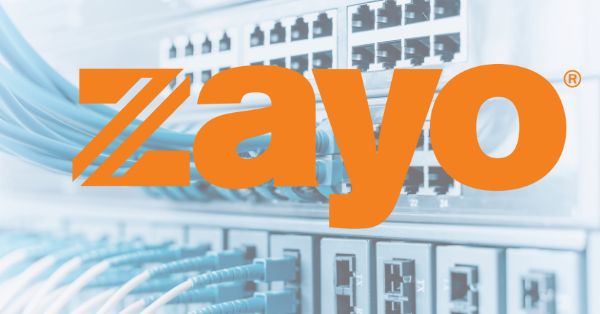Zayo extends debt to 2030 to fund AI-era fiber capacity
Zayo has secured creditor backing to push major debt maturities to 2030, creating headroom to fund network expansion as AI-driven demand accelerates.
Amend-and-extend details and exchange offers to 2030
Zayo entered into a transaction support agreement dated July 22, 2025, with holders of more than 95% of its term loans, secured notes, and unsecured notes to amend terms and extend maturities to 2030. The company plans to implement the agreement through a series of exchange offers. The intent is straightforward: reduce refinancing pressure in the near term and free up capital flexibility to execute long-haul and metro buildouts aligned to AI, cloud, and enterprise demand.
Lower refi risk to support AI-driven long-haul and metro builds
AI training and inference are reshaping traffic patterns, with east-west flows across data centers and cloud regions stressing both long-haul and metro fiber. By extending maturities, Zayo lowers refinancing risk in a higher-for-longer rate environment and preserves cash for growth capex. The move aligns with its pending $4.25 billion acquisition of Crown Castle Fiber assets and follows years of heavy investment in fiber infrastructure. Taken together, the balance-sheet reset and M&A pipeline position Zayo to scale purpose-built routes where AI clusters, cloud on-ramps, and colocation hubs are densifying fastest.
ABS and project financing options for fiber growth
Zayo signaled openness to alternative financing such as asset-backed securitizations (ABS) and project financing. For fiber, ABS can isolate predictable, contracted cash flows, think dark fiber IRUs or long-term wavelength services, potentially lowering the cost of capital versus corporate debt. Project finance can fund discrete, ring-fenced builds like new long-haul corridors or metro expansions anchored by anchor tenants. Both structures can accelerate build programs without materially increasing corporate maturities, if executed prudently.
Investment priorities for AI-ready networks and services
The company’s bigger financial runway is designed to enable targeted investments in routes and products most critical to AI-era workloads.
Purpose-built long-haul and DCI routes with 400G/800G
Zayos stated that focus on purpose-built long-haul routes aligns with hyperscaler and AI platform needs: low-latency, high-capacity paths between key metros and inter-regional corridors for data center interconnect (DCI). Expect emphasis on 400G/800G wavelengths, diverse east-west and north-south routes, and engineered latency paths tied to GPU cluster locations. These builds also benefit carriers and enterprises requiring deterministic performance for hybrid cloud and storage replication.
Metro reach and on-net depth via Crown Castle Fiber
If the Crown Castle Fiber acquisition closes, Zayo gains deeper metro reach across major U.S. markets. That can translate to more on-net buildings, denser laterals, and stronger small-cell and enterprise backhaul coverageuseful for AI edge ingress/egress, CDN expansion, and private connectivity to cloud providers. The combination of long-haul scale with metro depth is the operating model large buyers want: fewer handoffs, better diversity options, and faster custom builds.
Nationwide scale to serve data center expansion at volume
Zayo reports more than 19.1 million fiber miles across 147,000 route miles in roughly 400 markets. This footprint underpins dark fiber, wavelengths, Ethernet, IP, and managed services from core to edge. In the current cycle of data center expansionwhere campuses from Phoenix to Northern Virginia and European FLAP-D markets are adding power and racksscale matters for both speed to deliver and ability to guarantee diverse paths at volume.
Key financing, regulatory, and build execution risks
The plan is constructive, but outcomes hinge on transaction completion, integration, and build execution.
Closing milestones, covenants, and market conditions
The amend-and-extend strategy depends on successfully completing the exchange offers and meeting conditions contemplated in the agreement. Any dislocation in credit markets or shifts in rates could change economics or timing. Stakeholders should track closing milestones and final terms, including any covenant adjustments.
Integration discipline for metro assets and OSS/BSS
The Crown Castle Fiber deal, if consummated, brings integration complexity: network inventory harmonization, OSS/BSS alignment, product rationalization, and customer migration. Integration discipline will determine how quickly Zayo can translate expanded metro assets into sellable, standardized routes and SLAs.
Permitting, rights-of-way, and labor constraints
Supply chains for fiber, optics, and construction crews have improved, but long-haul builds still face permitting, railroad and DOT rights-of-way, and labor constraints. Timeline realism, especially for bespoke routes supporting AI campuses will remain a gating factor for revenue ramp.
How enterprises and cloud providers can engage now
Enterprises, cloud providers, and carriers can use Zayos’ extended runway to secure capacity and shape builds aligned to multi-year roadmaps.
Multi-year IRUs and engineered low-latency paths
Plan multi-year commitments for dark fiber IRUs and high-capacity wavelengths on critical corridors to get route diversity and pricing certainty. Where latency is strategic, request engineered paths with measurable targets and financial credits.
Co-funded laterals and anchor-tenant project finance
Leverage Zayo’s flexibility and potential project financing to co-fund or prepay for custom laterals, campus rings, and regional long-haul spans. Anchor-tenant commitments can accelerate delivery and enforce milestones.
Validate physical diversity and compliance alignment
Even with Zayo’s expanding footprint, maintain dual-provider diversity across distinct conduits. Validate physical path separation, bridge/river crossings, and railroad segments; don’t rely solely on marketing maps. For regulated workloads, align connectivity with data residency and compliance controls.
Extended runway supports AI-focused buildout
Zayos amend-and-extend, coupled with its pending metro fiber acquisition, reduces near-term refinancing risk and supports an aggressive build agenda tuned to AI-era traffic.
2030 maturities boost flexibility; execution will decide share capture
Extending maturities to 2030 gives Zayo breathing room to fund priority long-haul and metro projects and to explore ABS and project finance that match assets to liabilities. If the exchange offers close as expected and Crown Castle Fiber integrates cleanly, Zayo will be better positioned to deliver low-latency, diverse routes at scale across top AI and cloud corridors. The opportunity is substantial, but execution, financing, closing, integration discipline, and building velocity will determine how much of the AI-driven connectivity spend Zayo ultimately captures.
































